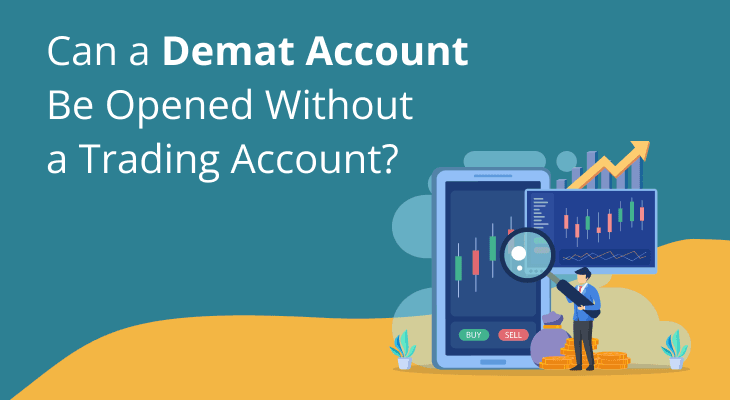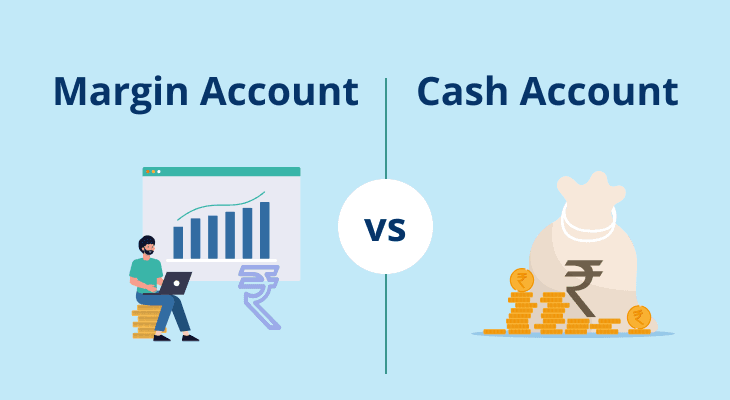
Can a Demat Account Be Opened Without a Trading Account?
Demat and trading accounts are two of the most common terms new investors encounter when entering the financial markets. It is a common misconception that these accounts always coexist. However, opening a Demat account does not require a trading account. Knowing when and why you might decide to do this can help you make informed financial and investment decisions.
What is a Demat Account?
A demat account, short for dematerialised account, holds your shares and securities electronically, eliminating the hassles associated with physical share certificates. Managed by central depositories in India like National Securities Depository Limited (NSDL) and Central Depository Services Limited (CDSL), demat accounts securely store stocks, bonds, mutual funds, government securities, and Exchange-Traded Funds (ETFs).
Opening a Demat account functions similarly to a savings account but stores financial assets rather than cash. It makes keeping track of your investments easier, cuts down on paperwork, and protects them from loss or physical harm.
What is a Trading Account?
In contrast to a Demat account, your assets are not held in a trading account. Instead, it is a gateway that lets you buy or sell stocks. It facilitates smooth transfers and transactions by directly connecting your bank account and Demat account.
Engaging in active market buying and selling is impossible without a trading account. A trading account may thus be compared to a bridge that effectively facilitates transactions by moving securities between your bank and Demat accounts.
Can You Have a Demat Account Without a Trading Account?
Indeed, you can. For several reasons, many investors would rather open a demat account without connecting it to a trading account. This arrangement is ideal if your investment objective is to hold securities for an extended period without engaging in active trading.
Examples of typical situations are:
- Investors converting physical share certificates into electronic form.
- Individuals inheriting securities they intend to hold without immediate sale.
- Employees holding company shares obtained via Employee Stock Ownership Plans (ESOPs).
However, remember that you cannot trade securities without a trading account. Your Demat account alone does not provide the functionality required to buy or sell in the market.
When Do You Need Both Demat and Trading Accounts?
If you regularly buy or sell stocks, mutual funds, bonds, or other financial instruments as part of your investment strategy. Both a Demat and a trading account are necessary. Here’s how having both accounts may benefit the following capital market participants.
- Regular stock traders buy and sell securities frequently.
- Investors actively manage their investment portfolios.
- Those participating in Initial Public Offerings (IPOs) or trading on stock exchanges.
A trading account enables quick execution of transactions, while your Demat account securely holds your assets post-transaction.
Key Differences Between Demat and Trading Accounts
Understanding the differences between these two accounts can clarify their distinct functions:
Feature | Demat Account | Trading Account |
Primary Purpose | Storing financial securities electronically | Facilitating buy and sell transactions |
Account Functions | Similar to a savings account for securities | Operates like a current account for trade executions |
Service Providers | Depository Participants (DPs) such as banks and financial institutions | Stockbrokers and brokerage firms |
Necessity | Required to hold shares and other securities | Essential for trading and market transactions |
Regulatory Authority | Securities and Exchange Board of India (SEBI) via NSDL/CDSL | Securities and Exchange Board of India (SEBI) |
How to Open a Demat Account Without a Trading Account
You can follow these simple steps to open a Demat account without a trading account:
Step 1: Select a Depository Participant (DP)
The first step is to select a registered Depository Participant DP, which is usually a bank, financial institution, or stock broking house. When weighing your options, consider factors like charges, convenience, and service quality.
Step 2: Complete the Application Form
Fill out the Demat account opening form, providing accurate details about yourself, including your PAN number, residential address, and contact information.
Step 3: Submit KYC Documents
You must submit mandatory Know Your Customer (KYC) documents such as:
- PAN Card (mandatory)
- Identity Proof (e.g., Aadhaar Card, Passport)
- Address Proof (e.g., Utility Bill, Passport)
- Recent passport-sized photographs
Step 4: In-Person Verification (IPV)
Some DPs conduct IPVS to verify your identity and the authenticity of submitted documents. IPVS may be conducted online via video call or at the DP’s physical branch.
Step 5: Obtain Your Demat Account Number
After verification, the DP will provide you with a unique Demat account number. You will also receive details such as Client ID and DP ID. Your Demat account is now active and ready to hold securities electronically.
Having a Demat account without a trading account is a practical decision for long-term or passive investors. However, for engaging in active trading, having both trading and Demat accounts is essential, as they are practical and efficient in managing your investment portfolio. Knowing about the precise distinctions and features of the two may
Also Read: https://www.mstock.com/articles/demat-account
Also Read: https://www.mstock.com/articles/demat-account-opening-procedure


